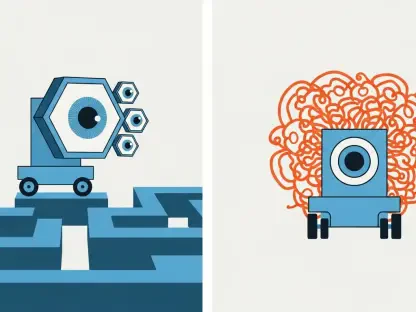In an era dominated by rapid technological advancements, the contrast between human empathy and AI-generated empathy emerges as a crucial subject. To fully understand and leverage the power of empathy in shaping human experiences, we need to delve into the intricate dynamics of how it is perceived when arising from human or AI sources. This analysis explores the nuances of empathetic interactions, focusing on their implications in vital sectors such as healthcare, education, and mental wellness.
Understanding Empathy: Human versus AI
Empathy, fundamentally, involves understanding and sharing another’s emotional experience, an innate characteristic that has evolved alongside human interactions. Originating from the evolutionary need for cooperation and social bonding, human empathy has become a cornerstone for social dynamics and emotional intelligence. Humans possess the unique ability to comprehend complex emotional cues and respond instinctively, fostering genuine connections rooted in shared experiences and understanding.
Contrastingly, AI empathy is a product of sophisticated algorithms developed to mimic these human interactions. It is crafted through the integration of large language models and machine learning, aiming to simulate human-like responses in communication tasks. The significance of empathy in contemporary society drives AI’s relevance, as it is increasingly implemented across fields like healthcare and education to enhance interactions and improve service delivery. The creation of AI empathy signals a transformative shift in how emotional services can be provided, although the authenticity of such interactions remains questionable.
Comparative Perspectives
Cognitive Empathy
Cognitive empathy involves understanding another’s perspective, enabling individuals to comprehend others’ mental states without necessarily sharing their emotions. Human empathy excels in this area, as it allows for nuanced appreciation of complex social scenarios. Through years of social conditioning and personal experiences, humans develop an intuitive grasp of others’ cognitive frames.
AI’s approach to cognitive empathy intersects with its ability to process vast data, identifying and learning patterns of human communication. This automated understanding can simulate cognitive empathetic processes with efficiency, presenting ready analyses of emotional queries. However, these systems lack the intrinsic sensibilities human empathy inherently possesses. Models and algorithms may replicate understanding, but cannot reach the authenticity born from personal cognitive processes.
Affective and Motivational Empathy
This dimension refers to the capacity to respond appropriately to others’ emotional states and to align one’s motivational alignments accordingly. Human empathy’s emotional engagement is generally more profound, as it is capable of responding with genuine emotional investment. Humans interpret emotional cues and respond with emotional resonance, reflecting true emotional alignment.
AI systems simulate affective and motivational engagement by interpreting input data and providing responses that appear empathetically motivated. However, their algorithms struggle to achieve the depths of authentic emotional interaction. The effectiveness of AI in motivating or comforting relies on its ability to process input data accurately, creating a veneer of emotional engagement that lacks the sincere underpinnings of human empathy.
Perceived Authenticity and Trust
Authenticity in empathetic exchanges is pivotal; the genuine emotional investment and effort perceived in a response foster connections and build trust. Human-driven empathy is naturally perceived as more transparent, with trustworthiness built upon the recognition of genuine human emotion and effort at play. Authenticity is a fundamental requisite for meaningful empathetic exchanges, forming the basis of trust.
AI empathy, however, faces significant hurdles in presenting authenticity. As responses are generated by algorithms, the lack of genuine emotional input can challenge user trust. While AI can produce polite and seemingly supportive interactions, these often miss the personal touch that solidifies trust, thus affecting user satisfaction and perception.
Challenges and Considerations
The technical limitations that confront AI in simulating authentic empathy include difficulties in truly understanding context and adjusting responses based on nuanced social cues. Ethical dilemmas also arise, surrounding issues of privacy, data security, and the potential misuse of AI in emotionally sensitive contexts. Human empathy, by contrast, is not without its faults, as biases and variability in emotional intelligence can affect empathetic interactions, reflecting the diversity of human perspectives.
Striking the right balance between human and AI interactions requires a careful assessment of context. While AI presents promising potential in assisting communication, its role should complement, not replace, human interactions that require emotional authenticity and complexity.
Conclusion and Recommendations
In this evolving landscape, the distinctions between human and AI empathy yield valuable insights. Their applications are context-dependent, with human empathy favored in settings demanding intimate emotional knowledge and AI potentially enhancing communication where efficiency is paramount. Moving forward, it is imperative to foster a hybrid model, where AI solutions are integrated thoughtfully, preserving the emotional depth that uniquely human empathy can offer. For society and industries, the need for a balanced approach, mindful of empathy’s evolving role, ensures technological advancements elevate and not diminish human connection.









